Premium Tours India Your online Tour Guide for Incredible India Trip
Recommended Tours
01 The Taj Mahal 02 Pushkar Fair 03 The Golden Temple,Amritsar 04 Camel Safari 05 River Rafting 06 Varanasi Ghat More... |
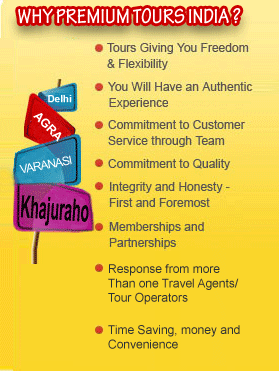
You Are Here >> Premium Tours India >>Special Interest Tours >> Indian Culinary Delights
Duration: 23 Nights / 24 Days
Destinations Covered : Delhi - Udaipur - Ranakpur - Rohet - Jodhpur- Jaipur- Agra - Fatehpur Sikri - Jhansi - Khajuraho - Varanasi - Delhi - Chennai - Mahabalipuram - Kanchipuram - Cochin - Alleppey - Houseboat - Kumarakom - Cochin - Mumbai
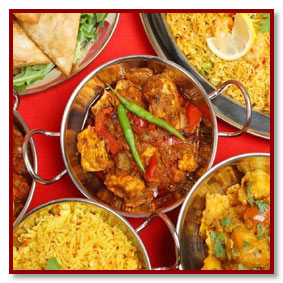
The subject matter of Indian Cooking is as vast as the country. With differences in language, customs and traditions, the food habit as well as there preparations very from one province to another. Nevertheless, it is our earnest hope that our Culinary trips will be of some help and guidance to those who are interested in Indian cooking.
It is fairly common in the west to assume that Indian food is always ‘hot’ this is not true. Majority of Indians, who relish well cooked food, never like chilly power or ground peppercorn. It is important to remember that if you use only tumeric, salt and a little garam masala (mixed spices) leaving out the black peppercorns, you can make delicious curries which will be relished even by small children.
Ingredients: Again, it is a fairly common belief that Indian ingredients are difficult to obtain in the west. However, now most of the ingredients can be had from local grocer or supermarket, besides the gourmet experts we meet on our tour would advise us readily available substitutes, so that your Indian Cooking can still be delicious with ingredients obtained entirely from your local shops.
Weight and Measures: It is often not easy to give precise measurements for water in some recipes you would be explained during the tour. Therefore, it is advisable to take most particular notice of the terms ‘thick’ and ‘thin’ for better and syrup and ‘stiff’ or ‘loose’ for pastry and dough. This is more important than halving or doubling the quantity of a recipe. There is no hard and fast rule as to how much flavouring or butter fat is to be used in different dishes, so that you make a little variation in the measures would not spoil the food in anyways.
Cooking Utensils: Most cooking utensils are made of tin plated brass, iron or steel. It is however quite possible to cook Indian food in heavy enameled or aluminum saucepans. Deep heavy frying pans may be used for cooking vegetables, for frying and for condensing milk.
Serving Food: Indian Food, including the bread is served hot, although milk curd and its preparations, of course, are served cold. The modern way of serving food is to start with one dish of curry (preferably juicy) with the rice pulao. Then follow the other vegetables and meat dishes which are eaten with any of the several varieties of breads – chappatis, nan, puris etc. Next come the sweets, followed by fresh bowl of fruits. The traditional way of serving food is to have a brass or nickel platted ’thali’ (medium sized around tray) for each person. On it are arranged 2 or more shiny bowls filled with various food. Chappatis or other kinds of bread are usually placed in the center of the thali. A majority of the Indian folk still eat with their well washed hands. They slip thr juicy food from the shiny bowls, and ingeniously manipulate the rest of the eatables by gathering them up with morsels of bread.
The dietary habbits of different refions in India is distinct. The distinction is most pronounced when we compare North and South Indian food. The North Indian food habits are very much bread based. Thus the different varieties of bread that we find in India are a result of the North Indians love for bread. The North – Indian non – vegetarian preparations are mainly focused on goat meat and chicken. Fish is consumed generally in a fried form to go as snacks with alcoholic beverages. However, the regions meat and chicken preparations are known the world over as Mughlai food. There are very strong central Asian or Mughal influences in the preparations of meat or chicken here. Hence, the name mughlai. The preparation is rich without being hot. The popular North Indian vegetarian food includes delicious preperartions of a variety of lentils, chick peas, kidney beans spinach and cottage cheese. However, even within North India there are differences in food habits and preparations from province to province. The Kashmiri food has much stronger influences of the North West Frontier region. The food preparations (specially meat / chicken) are much more elaborate and involves a greater variety of spices, marination, seasoning and abundant use of dry fruits. As we move away from the border regions the flavour of the food starts to loose its Mughlai touch and more regional alternatives appear. With the loss of the the Mughlai touch, the emphasis also shifts to vegetarian preparations. The North – Central state of Utter Pradesh has its own brand of cooking involving fewer species and less of frying. Unlike non – vegetarian food, vegetables would get burnt and if the spicing is strong, we would get a flavour of only the spices and not the vegetables- spices are used such as to delicately heighten the taste of the vegetables.
Down South of India, the emphasis is purely on vegetarianism. This also conforms with their strict religious beliefs and observances, which advocate strict vegetarianism. South Indian food could be either very hot or completely deprived of any spice, save for salt. Fortunetly, the south Indian preparations of Idlis, Dosas, Vadas, and Uthapams, which are extremely popular all over the country fall in the latter category.
Needless to say, on our tour we would chiefly concentrate on these dishes. As opposed to North India, the South Indians are more liberal users of rice. If the North India has a variety of breads, the South has a variety of rice – lemon rice, tomato rice, curd rice,pickle rice, vegetable rice etc. It is pertinent to mention here thast there is no strict form of idlis, dosa or vada. There are over a 100 methoids (literally) of preparing these depending upon the ingredients you put in and the technique of preparation depending upon the ingredients you put in and the technique of preparation – each preparation is guranteed to be unique. Very simple put, idlis are ground and fermented rice dumplings prepared in steam. But of course, it could be a plain idli, a wheat and rice idli, lentil idli etc. Dosas are thin better of ground and fermented rice and lentils, spread over a flat frying pan. It could be just that or have a variety of pastries - cheese, onion, potatos. The South Indian food are easy to prepare and easy to digest.
Besides covering Kashmiri, Punjabi (mughlai), central Indian and south Indian food we could also taste and learn some speciality dishes of other parts of India. Of special mention are the preperation of the sea faring Goan people. Goa has a very noticeable Portuguese influence and their cusines reflect this influence. Bengal is famous all over India for her sweet preparations; The Himalayan state of Sikkim is famous for its ethnic Himalayan cusines which have ethnic Tibetan influences. Darjeeling and other popular hill station still has a lot British in it. Our Hotel here true to colonial style prepares some of the best continental fare in the country.
It is however, patient to mention that there are two distinct lines of thought as far as most Indian food preparation is concerned. The first school of thought are the prim and proper hotel chefs and catering schools, where you would be told exact measurements, frying/baking/ boiling time etc. So that you have the ‘Just right’dish. However, the Indian housewives who comprise the second school of thought outrightly reject the exactness of approach. For generations Indian wives have been feeding us without any formal training with mouth watering dishes. They work on approximation and with formal training with mouth watering dishes. They work an approximation and with fewer spices. The paradox is that both lines of thought produce absolutely mouth watering dishes. The main feature of our tour would be visiting Indian families and sharing kitchen secrets with hoiuswife and share meals with a family in their home. For specialist learning we would visit catering schools as well as have special meetings with Hotel Chefs.
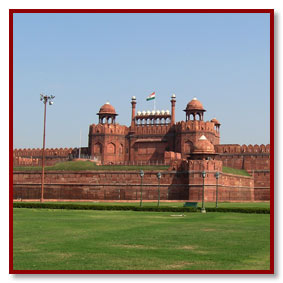
Day 01: Arrival / Delhi
Late Night arrival. Meeting and assistance upon arrival as our representatives welcome you and escort you to your Car.
Whilst the room keys and check-in is organized, our representative would introduce the tour to you and hand over the documents to you.
Welcome to our tour, or as we say ‘atithi devo bhava’ (the guest is an incarnation of God). Thank you for giving us the opportunity to serve you!
Overnight at The Connaught - a 4* Downtown Hotel (Standard Room)
Day 02: Delhi
Following breakfast, we proceed on a guided tour of New Delhi, Visiting such sights as Bahai Temple, Humayun’s Tomb (1586), the Qutab Minar 72 meters high and one of the most perfect towers in the Persian world. The Iron Pillar which has survived the vagaries of weather for over 1500 years. Continue with a drive through Embassy area, the Government buildings (1921-1930) and Connaught Place, the heart and main shopping district of the capital.
We visit the Frontier restaurant for Lunch. This would be our first introduction to Indian food. As the name suggests, the place specializes in cuisines of the North West Frontier region. The décor is also ethnic – craggy stones walls, traditionally dressed waiters, musicians playing local musical instruments live and circulates amongst the guests. It is a modern air conditioned restaurant with plenty of character. Food is served in bronze thalis (trays) and decorated globlets for drinks or water. Following our city tour and after wash and change we invite you to special welcome dinner accompanied by colorful and traditional folk dances of India. After our heavy lunch if some of us are not keen for heavy meal, they would have a choice of a variety of well marinated and maildly spiced kababs.
Tonight’s dinner would be a south Indian affair. We visit Udipi restaurant which is one of the best for South Indian Cusines – dosas, vadas, idlis, sambar (lentil Soup), uthapas etc. with a south Indian filter ciffee at the end.
Overnight at The Connaught - a 4* Downtown Hotel (Standard Room) (B, L, D)
Day 03: Delhi
In the morning we cross the city and into the walled gates of the Old Delhi. The capital of Muslim India between the 17th and 19th centuries, Old Delhi seems somewhat anachronistic as compared to New Delhi. It draws one through congested roads and lanes, interesting mosques, monuments and forts relating to its chequered history. Our tour includes visits to the Jamma Mosque (1650) and drive through the fabled area of Chandni Chowk (aptly translates to Moonlight Square) where the throngs of shoppers and vendors meet in the oldest area of Delhi, on to the Red Fort (1639-1648 built by Shah Jehan the builder of the Taj Mahal in Agra) to view the inlaid and carved Royal Chambers, on to Raj Ghat and nearby ghats where the founder of the nation, Mahatma Gandhi and thereafter Indira Gandhi and Rajiv Gandhi were cremated.
The highlight of this tour would be a ride on cycle rickshaws. Now these are 3-wheel cycles with a sofa seat at the back. The Rickshawalla (Rickshaw driver) sits on a small cushion in the front and two passengers on the sofa seat behind. This is a remarkable way to explore and picture the hustle and bustle as well as the colour of the narrow winding streets bursting with people and pavement shops selling wares of all description - including a laughing set of dentures. The ride would be accompanied by peals of laughter both from the passengers as well as the onlookers
Home Dinner with An Indian Family: In the afternoon we would visit an Indian Family to observe and learn some of the Indian’s housewife’s secret. We would have the meals with the family in the evening. You could also participate in the actual cooking of the meal.
Overnight at The Connaught - a 4* Downtown Hotel (Standard Room) (B, D)
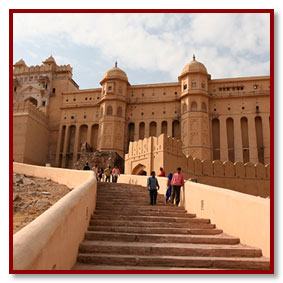 Day 04: Delhi / Udaipur (9W 3401 – 0545 / 0810 Hrs)
Day 04: Delhi / Udaipur (9W 3401 – 0545 / 0810 Hrs)
Early this morning transfer to the airport to connect your flight to Udaipur
Meeting and assistance upon arrival and transfer to your Hotel Jagat Niwas a modern heritage hotel replete with character and charm, besides all comforts discerning tourists would seek.
After rest and relaxation we proceed on a tour of Udaipur City. In the afternoon we do a boat cruise on the Lake Pichola. Following the cruise we would walk through the main and colourful bazaar of Udaipur. A highlight of the tour would be a visit to of clay, the moulding of bricks, setting up of brick kilns all by hand are interesting sights as are the camel carts bringing in clay and colorfully dressed men and women carrying bricksand clay in bamboo baskets over their heads. Tonights dinner would take us out of the city th the Shilpi Village complex – a modern Indian restaurant set up in rustic village complex – a modern Indian restaurant set up in rustic village ambience of thatched huts.
Evening we take a boat cruise on the serene and beautiful Lake Pichola. The island palace on the Lake called Jagmandir Palace is quite fascinating. The Palace provided inspirations and ideas to the builder of the Taj Mahal. The banks of the lake provide interesting glimpses of the daily bathing and the laundry that takes place here. Looking across the lake, with the city and its great palace rising up behind the island palace, is a scene of rare beauty.
Tonight’s dinner would take us out of the city to the Shilpi Village complex – a modern Indian restaurant set up in a rustic village ambience of thatched huts. Tonight we would taste some of the North Indian vegetarian fare – Kidney Beans cooked in a sauce, cottage cheese and pease cooked in gravy, succulent mashed vegetable balls in a thick gravy etc.
Overnight at Jagat Niwas (Deluxe Lake View Room) (B & D)
Day 05: Udaipur / Ranakpur / Rohet (160 Kms)
We ride out to Rohet. Our first stop would be at Ranakpur.
The Ranakpur Jain Temple was built during the reign of the liberal and gifted monarch Rana Kumbha in the 15th century. The basement is of 48, 000 sq. feet area that covers the whole complex. There are four subsidiary shrines, twenty-four pillared halls and eligibly domes supported by over four hundred columns. The total number of columns is 1,444 all of which are intricately carved with no two being alike. The artistically carved nymphs playing the flute in various dance postures at a height of 45 feet are an engrossing sight. In the assembly hall, there are two big bells weighing 108 kg whose sound echoes in the entire complex. The main temple is of Chaumukh or four-faces temple dedicated to Adinath.
We continue riding to Rohet. At Rohet, one is transported in to a world of the past, a world of honour and of chivalry, of glory and of pride; a world of vibrant colours and spectacular magnificence. Past centuries come to life at the historic boundary walls of Rohet- the 16th century fortified deserted home of a Rajput clan. Within the precincts of these time weathered walls is our hotel, the impressive Rohetgarh Fort- a bastion of proud Rajput traditions bathed in the ambience of unmistakable Rajasthani culture where one can, even today experience the famed warm and courteous Rajput hospitality. Frescoes on the tall gateway, brightly painted in the traditional style, using traditional motifs and colour schemes herald your entry to this charmed world the bygone era. The gateway leads to a compound where a profusion of flowers frame the archways in welcome. The portico is a warm and informal place decorated with the artifacts and trophies of many years. Exquisitely carved furniture, delicate hand block prints, original paintings and photographs decorate your rooms, which though redolent with the romance of a bygone era, provide all the modern amenities. Antique hunting riffles, shields & spearheads, daggers and original paintings form the backdrop of the dinning room. The swimming pool here is in beautiful settings and is an oasis in a dessert.
The food at Rohetgarh is special; each recipe is both traditional and typical, handed down the generations and jealously guarded to retain its pristine flavours. You savour only the very best of Rajasthani cuisine’s, food favoured by the Royalty. The 16th century descendants of the Rathore ruling family still live here and host the guests. The members of the Royal family interact with the guests and interesting stories and anecdotes are narrated.
We would also explore Rohet, which is a fascinating small feudal town, which seems to be straight out of the Arabian Nights. There is no proper road here - only one main dust trail. On either side are typical thatched houses and shops of all kinds - colourful bangles, silver jewellery, potters, fruit vendors on carts, dress shops, tailors etc.
Late afternoon we enjoy jeep safaris to visit the heart of Rajasthan villages where traditions centuries old still permeate life styles. One can witness the ‘opium ceremony’ - a ritual by which guests are welcomed. Gaily attired men and women carry on their chores and one can catch a glimpse of their norms and customs. The smoothened mud floors of the village huts remind one of the simple and traditional living here
As evening descends upon our hotel, the darkness of the night is lit up by the flickering flames of fire around which the rhythmic movements of the folk dancers assumes shape in brilliant colours; truly an electrifying experience.
Overnight at Rohetgarh (Deluxe Room) (B)
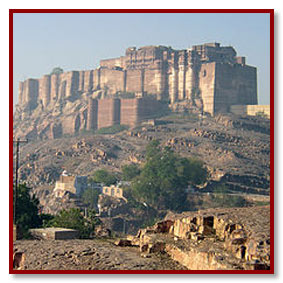
Day 06: Rohet / Jodhpur (40Kms)
After breakfast a short ride brings us to Jodhpur
Upon arrival check into your hotel Ratan Vilas, exudes an aura distinctly its own - enhanced by its rich and varied collection of paintings, treasure troves and hunting trophies of yesteryear. Everything is well preserved by the royal family, which still uses a part of the building as its home. The magnificent sandstone building, built for Sir Ratan Singhji, the Maharajadhiraj of Jodhpur, tastefully blends the lavish interiors and modern comforts. Present day facilities are harmonized so as not to disturb the antiquity of the royal abode.
After rest and relaxation we will visit the massive fort. In olden days this must have been impregnable since its rocky base is scraped straight down making it nearly impossible to ascend. Once inside, royal palaces abound with fascinating history and priceless jewels, on to the armoury and Jaswant Tara - the Royal Crematorium.
Following lunch we visit the Clock Tower Bazaar. This is one of India’s largest and most colourful wholesale markets especially with respect to clothes, fabrics, spices, vegetables etc. It is a fantastic experience to walk through the place observing and photographing this incredible spectacle of vibrant lifestyles and incredible colours.
Overnight at Ratan Vilas (Standard Room) (B)
Day 07: Jodhpur / Jaipur (Intercity Express - 0545 / 1020 Hrs)
Early morning transfer to train station to board your intercity to Jaipur.
Meeting and assistance upon arrival transfer to Hotel Alsisar Haveli - This is the flagship hotel in a bouquet of heritage hotels. The Haveli lies tucked away in the heart of Pink City, Jaipur. It brings back to life the grandeur of the old days and is a memorable regal Rajasthan experience for the guests. Refurbished in 1982, the Haveli incorporates the finesse of traditional Rajput architecture and a site to behold. The large elevated platform that dominates the central area of the ground floor and once used for get-togethers by the gents of the house is now open to guests who can witness puppet shows and folk dances while enjoying their snacks or drinks. The spacious lobby, which opens into the chowk (inner courtyard), was a century ago used by the ladies of the house and is now open to guests. You will treasure this experience of staying in an authentic Rajput home.
Rest of the day is at leisure to explore the unending shopping options of Jaipur.. An essential starting point for Rajasthan craftwork is block making and block printing and we will be exploring the process from start to finish in some of the popular stores here. The opportunity also exists here to tailor make outfits to your design and size.
We also explore one of the chief attractions of Jaipur - its jewelry, which offers a variety that ranges from chunky tribal jewelry to enameled gold to modern diamond jewelry. Kundan (art of stone setting) and enamel jewelry has been a specialty of Rajasthan, particularly that of Jaipur. The stones are embossed into decorative shapes & patterns and embellished with delicate enamel ornamentation in the champeve (raised field) technique. Jaipur is well known for its gold and silver enameling. Colorful bangles made of lac and set with semiprecious stones make an inexpensive buy. The craftsmen take great pains to embed the hundreds of stones into the lac. The skilled gem-cutters of Jaipur carve enchanting little animals and birds from rock, crystal, jade, smoky topaz and amethyst. Intaglio beads & buttons and crystal scent bottles are also available.
This evening dinner would be specially arranged for us at Surabhi, a heritage restaurant in a 300-year-old palace in Jaipur. The heart of the restaurant is the Durbar Hall, which is the main seating area. Having a meal there is just like having it in the Diwan-e-am (Hall Of Public Audience) of Amber Fort or City Palace. With original marble pillars, the Hall is the third largest in Jaipur after Amber and City Palace. The total seating capacity is 250 covers. We have an air-conditioned hall also with 50 covers. One of the unique features of the hall is the carving on the 280-year-old pillars whose designs are unfinished. Probably something happened; this is shrouded in the mist of history. The Haveli Mansion) is one of the oldest in Jaipur. A Unique feature of the place is that they offer demonstration & Lectures on food and cook in front of the guests serving directly from the frying pan at dinnertime.
The other attractions of the place include a Full time Bhopa (an ancient tribe) singer and puppet show. Extensive library of coffee-table books on Rajasthan and India for guests to browse. Free visit to the world’s largest collection of turbans with lecture/demonstration. The Tandoor is located outside so that the Indian bread and tandoori (bar-be-cued) preparations are served hot directly and also for the guests to watch the food being prepared.
Overnight at Alsisar Haveli – Heritage Room (Standard Room) (B & D)
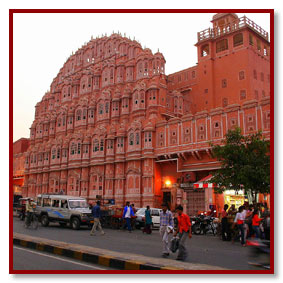 Day 08: Jaipur
Day 08: Jaipur
After breakfast we will visit Amber Fort the former capital of the royal Jaipurs. Elephant taxi up to the top of the hill where the fort is situated. Few fail to be moved by the dramatic Rajput grandeur of this hilltop fortress-palace 11 km north of Jaipur. Set on the dry wrinkled Aravali Hills, and surrounded by fortified battlements, the palace straddles two sepia-hued tundra hills overlooking Maota Lake, and its sprawling crenellated walls lattice the surrounding hills.
Later we will have a tour of City Palace & Observatory. The City Palace in the heart of the old city is a blend of Rajasthani and Mughal architecture. The centre of the palace is a seven-storied building called Chandra Palace, with fine vies over the gardens and the city. The palace lies in the heart of the city and occupies the whole central grid. The fortified wall has seven gates and was built for protection from invading armies and animals that lived in jungles, which surrounded the wall that time. Next, we visit the Solar Observatory - an astronomical treasure house, with solar device that give accurate predictions till date. The Palace Of Winds, a five-storied structure of pink sandstone has semi-octagonal and delicately honeycombed windows overlooking the main street of the old city.
In the evening you would be invited for meals to one of the Rajasthani family. The emphasis of the dinner would be on Rajasthani food, which again tends towards vegetarianism and has pulse base. The lentil sweet dish at the end is very popular.
Overnight at Alsisar Haveli – Heritage Room (Standard Room) (B & D)
Day 09: Jaipur / Agra (245 Kms)
After breakfast we drive to Agra. Upon arrival check in to Hotel Howard Park Plaza
Agra is the city of the Taj Mahal, perhaps the most photographed monument in the world. However, there is a degree of enigma about the Taj. Once you hear about a building so much and once you see so many pictures of a building your expectations are real high; and this is the enigma about the Taj Mahal. No matter how many pictures you have seen or no matter how high your expectations are the Taj never lets you down - the unparalleled glory and beauty of the building surpasses beyond all human imaginations. At sun set we visit the Taj Mahal to witness this spectacular monument built for love. Besides perfect symmetry in every aspect of its construction, the inlay work of semi precious stones into marble in pietra dura style is absolutely remarkable.
This evening we will have our dinner with a traditional family from Uttar Pradesh for a taste of cuisines from this North – Central state of India. The food is less rich, mildly spiced and is vegetarian. This family is a perfect example of how joint families live. Here, 4 generations live together in a huge traditional home.
Overnight at Howard Park Plaza- First Class Hotel (Standard Room)
Day 10: Agra / Fatehpur Sikri / Agra
After breakfast we visit the Agra fort the elegant buildings inside reflect an interesting synthesis of Hindu and Central Asian architectural styles. Built by Emperor Akbar, the maze of the courtyards, mosques & private chambers of the fort echo the story of the Mughal Empire. The Moti Masjid & other magnificent buildings reflect the skill of the ancient Indian architects.
Afternoon a short excursion to visit Fatehpur Sikri (ghost capital) for a tour of these magnificent and world heritage buildings, which are still in a state of perfect reservation. The city is divided into religious and secular sections. The profusion of sculpture is breathtaking. Also, the white marble mosque in the secular section is incredible. It is a very sacred mosque and pilgrims from far and near arrives here to pay their respects; from here we continue our ride to Agra
Overnight at Howard Park Plaza- First Class Hotel (Standard Room)
Day 11: Agra / Jhansi
Jhansi /Orccha / Khajuraho (Shatabadi Express - 0820 / 1040 Hrs)
Following breakfast transfer to the train station for a short ride on India’s premier train service to Jhansi
Meeting and assistance and drive to Orchha.
Afternoon, proceed on a guided tour of the city. The medieval city of Orchha, in the state of Madhya Pradesh, seems to have frozen in time, its palaces and temples still retaining their original grandeur. The city, located by the side of the beautiful Betwa river, was founded by the Bundela Rajput chieftain, Rudra Pratap, in the 16th century.The word Orchha means 'hidden'. When the Tughlaqs, who were ruling Delhi in the 15th century, pushed the Bundelkhand rajas out of Garkhundar, they retreated to distant Orchha. Apart from the famous landmarks like Jehangir Mahal, the Laxminarayan Temple, the area is peppered with fascinating little shrines and memorials, all of which add to the overwhelming feeling of nostalgia, the city evokes in the visitor
After the tour drive to Khajuraho, upon arrival check in to the hotel Jass
Evening is at leisure for your independent activities
Overnight at Hotel Jass (Standard Room) (B)
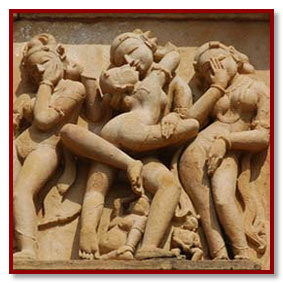 Day 12: Khajuraho / Varanasi (9W- 724 1330 / 1410 Hrs)
Day 12: Khajuraho / Varanasi (9W- 724 1330 / 1410 Hrs)
Morning, we meet our guide, and, proceed on a tour of the world famous western group of temples depicting erotic sculptures of love making images of Gods and Goddesses and celestial Nymphs. The sexual fantasies displayed in the sculptures are mind-boggling. It speaks very highly of the artistic creativity and imagination of the sculptors. Afternoon return to your hotel
Afternoon, transfer to the airport to board your flight to Varanasi
Meeting and assistance upon arrival and transfer to the Rashmi Guest House
Varanasi is quite possibly the world’s oldest living city. Religious artifacts link it to the sixth century B.C. Said to be founded by Shiva; Varanasi’s Vedic affiliation goes back to the beginning of time. It is also a city of many names. The present name, Varanasi (derived from the names of two nearby rivers) is mentioned in the Mahabharata. The ancient name is Kashi, the City of Light. To the devout it is also called Kashika, the shining one, referring to the light of Shiva. Many others prefer the anglicized Benares. Revered by Hindus, Buddhists and Jain alike, Varanasi is considered the holiest city in all of India. It is presided over by Shiva in his manifestation as Vishwanatha, Lord of the Universe. Buddha delivered a sermon in nearby Sarnath and Mahavira, the founder of Jainism, lived in Varanasi. As a result, more Indians will make a pilgrimage to Varanasi in their lifetime than any other place.
On your agenda this afternoon are several temples and the Hindu University at Benares. First stop would be the Bharat Mata (temple of Mother India). Inaugurated by Mahatma Gandhi, it features a huge marble map of India on the ground floor. Next up, the Durga Temple. Known for its bright red color and the playful, if sometimes aggressive, monkeys that run amok there, the Durga Temple is one of the most imposing architectural monuments in Varanasi.
Evening, we visit the ghats of Varanasi to witness the performance of Ganges Aarti. We enjoy a special evening cruise on the Ganges. See the Hindu devotees performing the "Puja" with lighted lamps. The view is very mesmerizing and the ambience is spectacular in the backdrop of the beating of cymbals and bells as well as the incessant chantings. Later return to the hotel
Overnight at Rashmi Guest House (Deluxe River Facing Room) (B)
Day 13: Varanasi
At dawn we visit the sacred Ganges for a boat ride. Every morning at dawn hundreds of worshippers can be seen bathing in the sacred waters. The great river banks are lined with an endless chain of stone steps—the ghats—that stretch from one end of the city to the other. The Ghats form an impressive part of the religious landscape of the city. Proceeding downstream at a leisurely pace, you would be pointed out the significant temples and buildings as well as the changing architectural style. Life and death go hand in hand in Varanasi. While young people seek prosperity and protection from harmful influences, the older generation comes to Varanasi to cleanse their souls in the forgiving waters in preparation for their ultimate dissolution. Believing that anyone who dies in the river of life in Varanasi gains freedom from the cycle of birth and death, the City of Light has become a haven for the sick and aged waiting out their final days. The smoke that billows from the crematoriums on the edge of the river gives testimony to their final release from life’s earthly confines. We would dock our boat at Manikarnika (Cremation) Ghat. On any given day, anywhere from a few dozen to a few hundred corpses are cremated here; the ghat is assiduous with activity as the cremated bodies threw up smoke and fire.
Following the boat ride we set off on foot to explore the inner city. Through a twisted maze of narrow alleys, home to numerous shrines and pilgrim shops, we walk back a few centuries. Life here has stood still for years. The homes, the shops and even the cattle have not changed over the centuries. It is a brilliant nostalgic experience of timelessness!
Evening, we take a short trip to the Buddhist city of Sarnath .It is here that the Buddha preached his first sermons after attaining enlightenment. The highlight of this tour would be a participation in the evening prayer service (aarti) of the main Buddhist temple here - the synchronized chanting of hymns to the accompaniment of traditional temple music is a sole stirring experience.
Overnight at Rashmi Guest House (Deluxe River Facing Room) (B)
Day 14: Varanasi / Delhi (9W 724 – 1440 / 1600 Hrs)
After breakfast we suggest that you visit the bustling Gadolia bazaar where we only have to walk. You would never have seen so many cycle rickshaws and heard the cacophony of so many cycle rickshaw bells! It is an amazing spectacle of colour and lifestyles, as you need to watch out for the pavement shops – especially the pavement dentist with a laughing set of dentures!!
Afternoon transfer to the airport to board your flight to Delhi
Meeting and assistance upon arrival and transfer to the Connaught
Overnight at The Connaught - a 4* Downtown Hotel (Standard Room) (B)
Day 15: Delhi / Chennai (9W 829 – 1025 / 1300 Hrs)
After breakfast transfer to the airport to board your flight to Chennai.
Meeting & assistance upon arrival & transfer to your hotel Radha Park Inn
After rest and relaxation we will proceed to the guided tour. One of India’s largest cities- Madras is the capital of the southern state of Tamil Nadu. The Tamillians are the proud inheritors of a rich cultural heritage, which is one of the main reasons for their beliefs of superiority over the hybridized culture of North India. Fort St. George (1653), built by the British, presently houses the State secretariat and the legislative assembly. The Fort has an interesting museum with fascinating collections of memorabilia from the early days of the British Raj. St. Mary’s Church (1678-80), was the first English church and the oldest surviving in India. The High court building, built of red sandstone has an interesting archaeological section and a bronze gallery. The former has an interesting collection of all major and ancient south Indian dynasties. The bronze section has interesting collections of Chola (9th century) bronze art. The High Court, built in Indo-Sracenic style is supposed to be the largest judicial building in the world after the Court Of England. The Kapaleshwar temple is an ancient Shiva temple in typical Dravidian (south Indian) style. Near the temple, the San Thome Cathedral (originally built in 1504), is a Roman Catholic Church believed to have the remains of St. Thomas the Apostle.
Overnight at Radha Park Inn (Standard Room) (B)
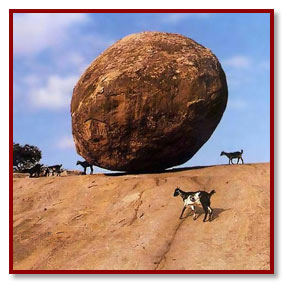
Day 16: Chennai/ Mahabalipuram/ Kanchipuram / Chennai
Spend the day among picturesque villages, crashing coastline, and rock-cut temples offering a window on daily life in an ancient Indian kingdom. Visit Mahabalipuram, seaside capital of the Pallava kings, famed for its shore temples and remarkable, lifelike rock carvings of animals, deities and village life 1400 years ago. Good seafood and a fine beach are among the other attractions to sample in town, before continuing to Kanchipuram, the golden Pilgrimage City of silks and shrines. On our way we stop to watch some fishermen hollowing out canoes from tree trunks. You could also witness similar craft being hauled out of the sea and fishermen unloading their catch, watched by fish-eagles hoping, no doubt, for a share.
Kanchipuram, a Hindu Holy City and capital of the Pallava dynasty from the 7th to 9th centuries AD, is renowned for temples and silk, and you will see plenty of both. The temples range in date from the 8th to the 17th century. The latest building was impressive in its size, the height of its gopuram, the intricacy of its carvings and wealth of colour, but, the earliest temples, of golden sandstone, are more aesthetically pleasing, the only colour provided is by a flock of ring-necked parakeets.
Across the road is a workshop where men sit at a loom, weaving fabrics that you will recognise immediately as "Madras cotton". However, Silk-weaving takes place on a grander scale than the cotton weaving in this town dotted with cottage workshops. You could visit a factory where all the processes of spinning, dyeing and weaving take place. Of special note would be exquisite wedding saris made to order - the silk is heavily interwoven with gold thread. The sari and blouse are woven together so as to ensure a perfect match.
Overnight at Radha Park Inn (Standard Room) (B)
Day 17: Chennai / Cochin (9W 3529 – 0630 / 0800 Hrs)
Morning transfer to the airport to board a flight to Cochin
Upon arrival and transfer to hotel Casino, a fascinating 4* hotel replete with character. The seafood restaurant here is a tremendous place in case you are fond of eating fish. The restaurant is open sided and the manager walks up to you with a cart of fish (dead, mercifully!). You make the pick and he cooks. The food here would be WOW stuff. Cooked in typical Kerala style and marinated with coconut and mild herbs, the food leaves a refreshing tingle on your taste buds!
This afternoon, ‘we are back home’. We walk into the local spice and fish markets to shop for our dinner, which you will unfortunately have to cook for yourself – just as back home. Can you imagine you will be paying for this ‘drudgery’? This evening it would be a hands-on cooking experience where you join the hotel chef to prepare typical Kerala cuisine with an emphasis on seafood.
Overnight at Casino Hotel (Standard Room) (B)
Day 18: Cochin
This morning is devoted to explore the legendary eclecticism of Cochin, a cluster of islands and peninsulas where ancient Phoenician, Arab, Jewish, Chinese, and European traders came from afar in search of prized spices, tea, and hardwoods. Here these influences merged with the traditional culture to create a Hindu Renaissance reflected in the town’s fine architecture, and its perfection of art and dance forms that are a focus of your stay. Visit the ancient Jewish Town, the historic Mattanchery “Dutch Palace” and Fort Cochin, the oldest European settlement in India. Photograph the cantilevered Chinese fishing nets and other indelible marks of early traders.
Kathakali Dance:
A special treat awaits us this evening as we proceed to witness the strength and vigor of Kathakali dance drama, as it enacts episodes from great Indian epics. The extremely stylized gesture, the elaborate make-up, the masks and the splendid costumes of these all-male dancers, recreates an incomparable sense of pageantry.
Overnight at Casino Hotel (Standard Room) (B)
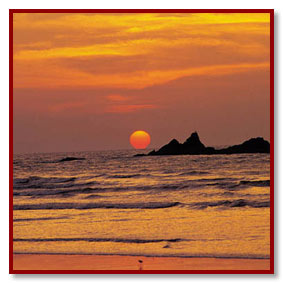
Day 19: Cochin / Alleppey / Houseboat
This morning we ride to Alleppey for a houseboat experience through the narrow canals and channels of the backwaters of Kerala.
The materials that go into the making of houseboat are all local and Eco-friendly; bamboo poles, coconut fiber ropes, bamboo mats carpets etc. The main wood used is "Anjali ". The Houseboat provides all comforts - Beds, a kitchen, western toilets and an upper deck. Traditional lanterns are used as lights. The cuisine is of traditional Kerala flavour along with the local Specialities - delicious fish and prawns.
Also, on board the boat we would have a typical backwater cookery demonstration where the crew would show us typical, but simple spices and marinations that are used in Kerala backwater cooking. The seafood preparations especially the fish fry are special. However, just set yourself up for a late lunch today.
We spend the day Cruising on our boat through remote tribal villages along the tranquil backwaters of Kerala is a superb experience. Sensational in its own silent way, the cruise takes you along snake boat docks, friendly cheering villagers, coir (Jute) making communities, toddy (local spirit) shops, fishing nets pitched for the day's catch, bunded paddy fields and manual canoes of different sizes criss-crossing each other. The experience enables you to reach beautiful untouched areas.
Overnight and meals aboard Air - Conditioned Houseboat
Day 20: Houseboat / Kumarakom
Following a leisurely breakfast our houseboat travels through narrow canals and reaches Kumarakom.
Upon arrival, drive to Abad Whispering Palms, located at Kumarakom the most exotic resort destination in Kerala right on the bank of the Vembanadu Lake in natural back water surroundings. Situated amidst natural backwater setting, it is a place where you can relax and bask in the luxury of tranquility.
Rest of the day is free for independent activities. You can also enjoy the optional ayurvedic body massage at the resort. You could also choose to explore the surrounding tribal villages, visit the nearby water bird sanctuary or ride through the narrow backwater channels through back of beyond Kerala.
Overnight at Whispering Palms (Lake View Cottage) (B)
Day 21: Kumarakom
After breakfast you could visit the adjacent Kumarakom Bird sanctuary, situated on the banks of the Vembanand Lake is known for its varied avian population. The bird sanctuary here, which is spread across 14 acres, is a favorite haunt of migratory birds and an ornithologist's paradise. Egrets, darters, herons, teal, waterfowl, cuckoo, wild duck and migratory birds like the Siberian storks that live there in flocks are a fascination for visitors. The best way to watch the birds of the Kumarokom sanctuary is a boat trip round the islands. The main attractions are local birds like the water fowl, cuckoo, owl, egret, heron and the water duck, as well as the migratory Siberian cranes.Parrots, teal, larks, flycatchers, wood beetle, and other birds are seen here during their respective migratory seasons.
Around noon, a short boat cruise brings us to 'Philip Kutty's Farm' to see an extraordinary way of life, farming and fishing. Here, we learn the intricacies of Keralan food preparations. The type of cooking you will be exposed to, is predominantly with a Christian and backwater influence, ie, plenty of meat and fish preparations as well as other vegetarian dishes and also the little family touches passed down over the generations
Overnight at Whispering Palms (Lake View Cottage) (B)
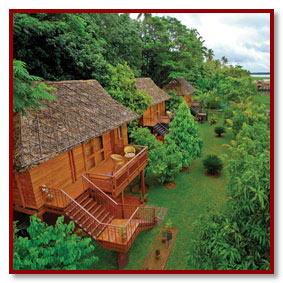
Day 22: Kumarakom / Cochin
Cochin / Mumbai (9W402 – 1300 / 1450 Hrs)
Morning drive to Cochin
Upon arrival transfer to Cochin airport to board a flight to Mumbai
Meeting and assistance upon arrival transfer to Hotel Fariyas.
This evening, We would also have an opportunity to visit Khyber restaurant for Dinner .Khyber has been going strong for decades now, and its classic Mughlai cuisine and tender kebabs remain outstanding. Start with the kali mirch rawas (fish seasoned in black pepper), so firm and yet so meltingly good, and the paneer shashlik (Indian cottage cheese, spices, and vegetables). Follow those with Khyber raan (lamb) or mutton chaap Mughlai and piping hot naan bread. To cleanse the palate (Mughlai cuisine is very rich), order the fresh seasonal fruit or a mishty doi (Bengali-style sweetened yogurt). Besides the great food, Khyber is an experience in royal dining: The opulent decor includes original paintings by some of India's most famous artists (like M. F. Hussain and Anjolie Ela Menon). Seating is also intimate and maximizes privacy -- perfect for a romantic Farwell dinner.
Overnight at Hotel Fariyas (Standard Room) (B & D)
Day 23: Mumbai
This morning, we proceed on a guided tour of a cosmopolitan & tropical Bombay, with pockets of palm trees and a warm salty breeze wafting in off the Arabian Sea. Its weathered Victorian mansions, some still privately owned, and many grand public buildings beautifully lit at night, stand as a lingering reminder of the days of the British Raj. Bombay’s culture is vibrant, often aggressive, reflecting the affluence and energy of a bustling city of 15 million people.
Our first stop is at Bombay’s landmark the Gateway to India, an elegant 26 mtrs stone archway, hastily erected as a symbol of welcome to Queen Mary and King George V of England on their visit to India in 1911. In the years following, artisans added decorative carvings and lovely Jharokha work (window carvings), and completed it in 1923. We continue to the hanging gardens perched above Malabar Hill. These terraced gardens provide a beautiful panoramic view of the Arabian Sea were laid out in the early 1880s covering Bombay’s main reservoir.Travel up Malabar Hill for magnificent vistas and a look at the fanciful Hanging Gardens and topiaries. Stop at Mani Bhavan, Mahatma Gandhi's home, now a museum dedicated to his life; and stroll through teeming bazaars crammed with antiques, jewelry, produce, flowers, and an array of handcrafted wares.
Overnight at Hotel Fariyas (Standard Room) (B & D)
Day 24: Mumbai / Departure
Transfer to International airport to connect your onward flight back home.
